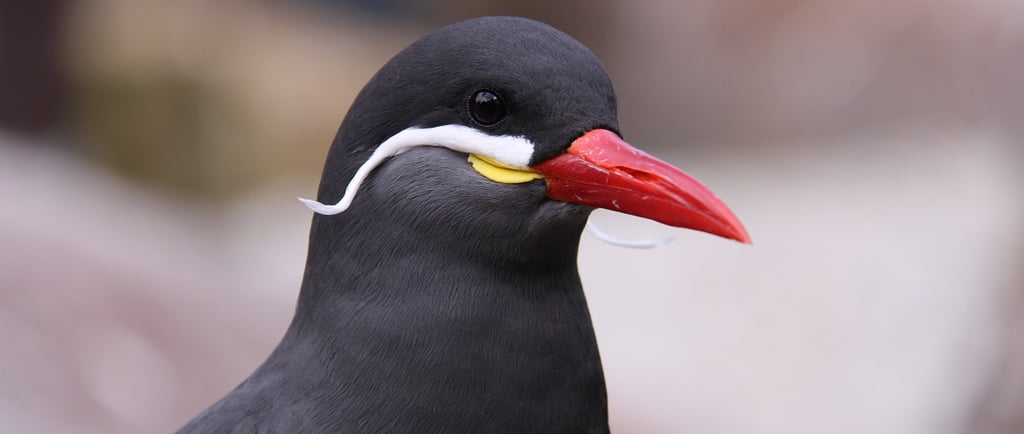The Mustached Bird of the Coast - The Inca Tern
Wellcome into the marvelous world of animals with the Animal Story Folders 🦝🦋🐾, my favourite material found in the Biology chapter Introducing Animals! 🌿 These folders are designed to ignite curiosity and prepare children for independent research. Through engaging oral presentations and beautifully organized folders, children explore essential topics like animal names, habitats, diets, physical features, reproduction, life cycles, and predators. This material provides a foundation for critical research skills while fostering a deep connection to the animal kingdom. Whether it’s uncovering the secrets of a raccoon’s night vision 🦝, a butterfly’s life cycle 🦋, or the survival tactics of a snow leopard 🐆, these folders encourage children to ask questions and seek answers.🐾📚
BIOLOGY STORIES
12/1/20242 min read


🌊 Imagine standing on the rocky shores of South America 🌎. The waves crash against the cliffs 🌊, and the air is filled with the calls of seabirds 🐦. Among them is a sleek gray bird with a bright orange beak and feet 🧡—and most unusual of all, a white mustache that curls on either side of its face 🥸. Meet the Inca Tern (Larosterna inca), one of the most striking and elegant birds in the world!
The Inca Tern lives along the Pacific coast of Peru and Chile 🌴, where it makes its home on rocky cliffs and islands 🪨. Its mustache isn’t just for looks—it’s actually a sign of good health 🏋️! The longer and curlier the mustache, the healthier the bird 🥸✨. Can you imagine a mustache being a symbol of strength and beauty?
These birds are expert fliers, soaring gracefully over the ocean in search of food 🌊🕊️. They dive effortlessly into the water to catch small fish 🐟, like anchovies, snapping them up with their sharp beaks. With their bright orange feet 🧡, they perch on rocks, chatting with their flock 🐦 and showing off their stylish feathers 💃.
The Inca Tern gets its name from the ancient Inca Empire 🏛️, which ruled the region where these birds live. Their gray feathers blend perfectly with the rocky cliffs 🪨, making them hard to spot when they’re resting 🕵️. Even when perched, their quiet elegance makes them one of the most unique birds of the coastline.
These clever birds are also playful 🎮. Researchers have observed Inca Terns picking up small objects like pebbles 🪨 and dropping them mid-flight ✈️, as if they’re playing games 🎯. Their curious nature makes them not just beautiful 🦜, but also entertaining to watch. What kind of games do you think these birds are playing?
Inca Terns are important to their ecosystem 🌎, especially because of their role as fishers 🐠. By catching small fish like anchovies and sardines 🐟, they help maintain the balance of life in the ocean 🌊. Their hunting skills are vital to keeping fish populations healthy 💧, which in turn supports other marine life 🐋.
Sadly, these elegant birds face challenges as their habitats change and their food sources become scarcer 🌊. Coastal areas are shared by many creatures, including humans, and sometimes this creates competition for resources 🐟. But there’s good news! Conservation groups 🌱 and local communities are working together to protect the cliffs and oceans the Inca Terns call home 🏡.By preserving their nesting areas 🪨, ensuring sustainable fishing 🎣, and spreading awareness, people are helping these beautiful birds thrive.
📜 Scientific Name: Larosterna inca
📏 Order: Charadriiformes
🌳 Family: Laridae
📐 Average Size: About 40 cm (16 inches)
⚖️ Average Weight: 180–200 grams (6.3–7.1 ounces)
🕰️ Lifespan: 14–20 years in the wild
✨ Unique Feature: White mustache that signals health and fitness
Let's see what else we can find in this Animal Folder about The Inca Tern.
Now that we’ve discovered so many amazing things about this unusual Tern, I wonder—what’s your favorite animal? 🐾 Maybe it’s one you already know a lot about, or perhaps there’s an animal you’ve always wanted to learn more about.
You can use what we’ve done today as your guide to create your very own animal folder or booklet 📚! Think about including details like the animal’s name, where it lives, what it eats, its unique features, and its predators. You can add drawings, fun facts, or even tell a story about your animal!
When you’re done, you can share your folder or booklet with us. We can all learn something new from your research, and you’ll be the expert on your favorite animal! 🌍✨ So, with what animal you will go on adventure research ?
With Montessori joy,
Vanina 😊

